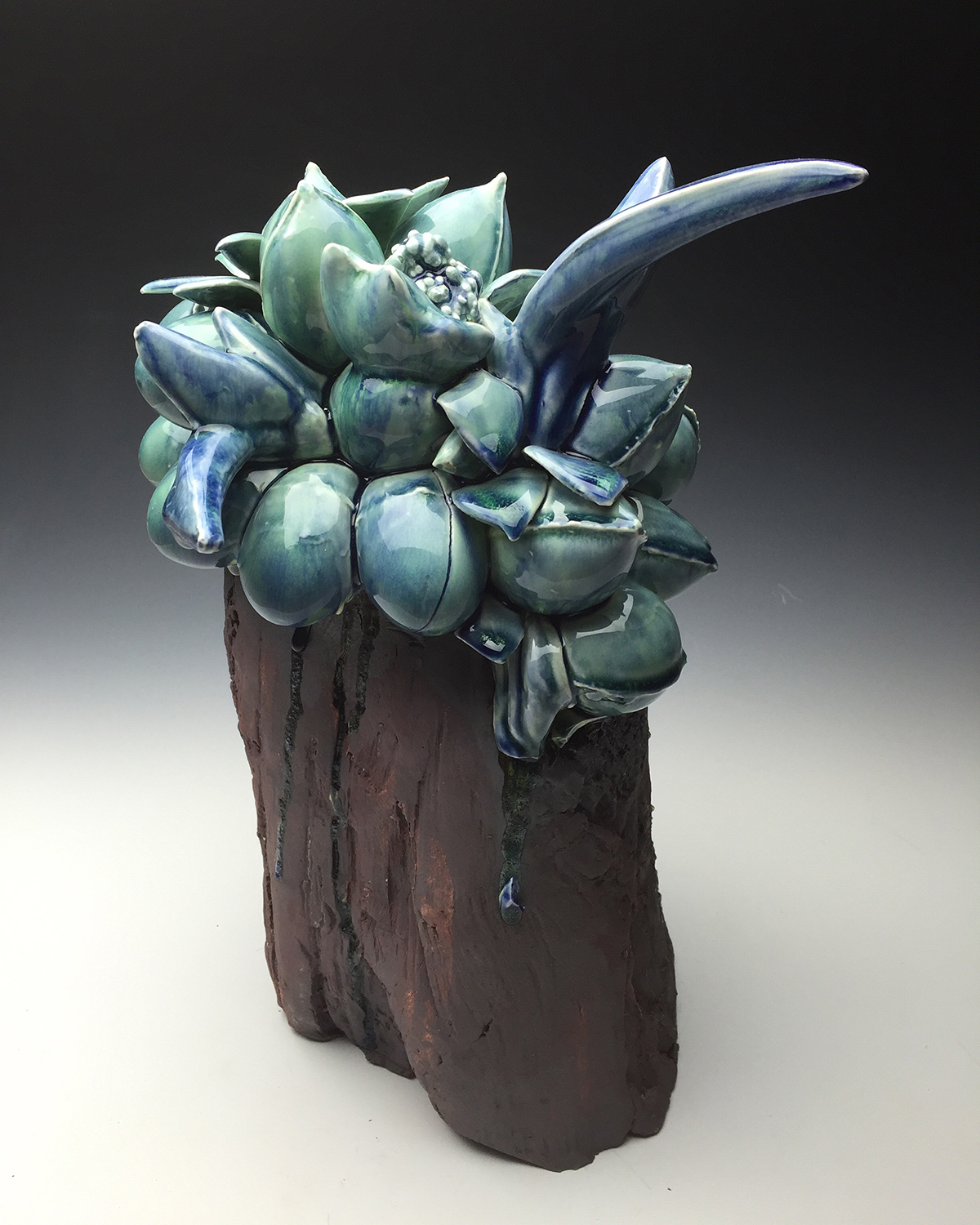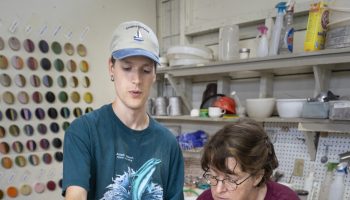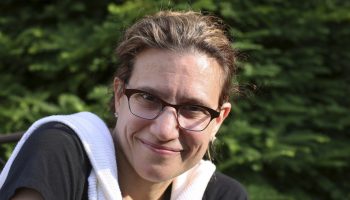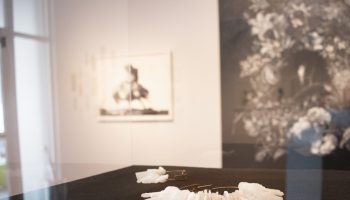Shoji Satake will probably be “all over the place” in his lecture at 7 p.m. Friday in the Hultquist Center. In his case, that’s not a bad thing.
“It’s the way that I think,” said Satake, an artist and associate professor of ceramics at West Virginia University.
He attributes his nonlinear thought patterns to being multilingual. His parents, who worked in the airline industry, moved to Alaska from Japan when Satake was 7 years old. His first and second languages are Japanese and English, and he’s been picking up new ones throughout his life. With his parents’ airline benefits, Satake grew up traveling, and as an adult kept up the habit.
He has lived in Italy and Moldova, studied ceramics in China and Japan and visited every continent except Antarctica — not that he hasn’t considered the possibility of going there, too. He looked into Antarctic artists’ residencies, but it would mean too much time away from home. As a rule, he doesn’t leave his family for more than 15 days. He has two children, a 2-year-old son and a 4-year-old daughter, with his wife, fellow ceramist and WVU professor Jennifer Allen.
In his own artistic work, Satake is mostly drawn to ceramics. He appreciates its potential to last eons.
“Ceramics is one of the few archival items that humans have,” he said. “It won’t ever break down or deteriorate.”
Some of his ceramic sculptures showed last year at the Fowler-Kellogg Art Center in the exhibition “Nature Redefined.” As guest critic Melissa Kuntz wrote in the Daily last July: “The objects themselves suggest underwater life, such as corals and sandbars. The beautiful textural contrast between the dry, scumbled surface of the neutral-colored ‘sandbars,’ and the shiny, smooth, brightly colored ‘corals’ are visually stunning.”

Satake thinks of the coral/sandbar combination as connected to wabi-sabi, a Japanese phrase regarding the art of imperfection, as well as to the yin-yang concept of balance.
“These two parts don’t exist without one another,” he said. “They look really incomplete if you separate them.”
To make the sculptures, Satake hand-builds and uses slip-cast molds. He often uses unusual, innovative processes in his work; he takes odd household items — dog toys or plastic Easter eggs, for example — to make molds that he can then alter, and incorporates 3-D printing into his ceramic work.
Satake has been involved in a number of innovative group projects as well. He’s a member of a collective called Occupy Museums, which formed after the Occupy Wall Street movement to draw attention to artists’ struggles with debt. Work from the collective was included in the “Whitney Biennial 2017” exhibition at the Whitney Museum of American Art in New York City. Satake also helped make small ceramic pine trees for a citywide scavenger hunt organized by the National Council on Education for the Ceramic Arts, “NCECA Tree Hunt 2017,” in Portland, Oregon, in which participants searched for the trees and could win artwork as prizes.
Satake has been especially dedicated to one project: advocating for the building of a memorial to the U.S.S. West Virginia, a battleship heavily damaged during the 1941 Japanese attack on Pearl Harbor. The ship was repaired and used throughout World War II before being decommissioned after the war and broken up for scrap in 1959. The mainmast of the ship is now displayed at WVU.
“There’s this connection between our campus and our state and that boat,” he said. “This kind of project is really worthy.”
Along with some of the few surviving crew members of the ship, Satake has worked on social media campaigns to petition Congress for a public memorial to the West Virginia at Pearl Harbor.
Some don’t understand Satake’s interest in the project.
“People have asked me, ‘Why would a Japanese artist want to do that?’ ” he said.
Satake, who has spent most of his life in America, reminds people that he is a Japanese-born, American artist. Getting other Americans to recognize that citizenship is determined by more than birthplace or appearance is nothing new; relatives of Satake, who had immigrated to the U.S. in the late 1800s, were held in internment camps throughout World War II.
Continuing discrimination against immigrants is “something that’s very poignant now,” he said, referring to the Supreme Court’s recent decision to allow parts of President Donald Trump’s travel ban, essentially restricting immigration based on which country, and religion, a person comes from.
“They’re insisting it’s not a Muslim ban — it is,” Satake said. “It’s based on color, creed, what these people look like.”
As an artist, Satake wants to discuss social and political issues in his work. That’s something artists have done for “hundreds and hundreds of years,” he said.
“I can use this platform in some ways to talk about some of the social changes that need to happen,” he said.
As a teacher, artist and parent, he said, “it’s part of my obligation.”




